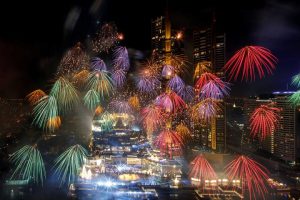Advantages of Delta Dental Insurance CA
The Central Embassy shopping mall now stands on what used to be the front third of the embassy grounds. In 2006, as part of its plan to downgrade several embassies and consulates to divert funds to other activities, the British Foreign and Commonwealth Office sold about 9 rai (1.4 ha; 3.6 acres) or about a third of the embassy’s estate-the portion fronting Phloen Chit Road-to Tiang Chirathivat Real Estate Company, whose owners also operated Central Group. Queen Victoria’s statue and the war memorial were relocated to accommodate the sale, which subsequently developed the land into the high-end Central Embassy shopping centre.
The war memorial has been relocated to the British Club, but Queen Victoria’s statue will be transferred along with the site. W. A. R. Wood, the Consul-General in Chiang Mai, assisted the British Office of Works in its design, which was executed by Office architect Archibald Scott. The main building of the embassy, built during the years 1923-1926, was a two-storey building in British colonial style. By August 2019, the ambassador’s residence was reported to have been demolished to make way for redevelopment. The building followed a rectangular plan, was ventilated by numerous windows, and was decorated with wooden fretwork and stucco.
This was a gesture of generosity, as well as restitution for an incident where Siamese officials punished a British subject of a crime, violating the extraterritoriality provided by the new treaty. By then, the newly built Charoen Krung Road also ran past the property, opposite the river. A flagpole, the tallest in Bangkok at the time, was raised in 1892 to replace an earlier one blown down in a storm. The consulate was raised to the status of a legation in 1895, and by the 1900s came to house several buildings, including the minister’s residence, two jails and two courthouses.
Paget made suggestions for the relocation of the legation, but the government’s response was unenthusiastic. The old compound was sold to the Siamese Government, which used it as the site of Bangkok‘s General Post Office, for about £110,000. This was enough to pay for both the land and the construction of new buildings (completed in 1926), as the new site was in a rural swampy area-a fact which made the move highly unpopular at the time. It wasn’t until 1922 that a new plot of land of about 12 acres (4.9 ha) in the Phloen Chit area was acquired from the Thai Chinese businessman Nai Lert.
Queen Victoria’s statue and the flagpole were relocated to the new site, and a war memorial was also erected in 1923. The minister’s (now ambassador’s) residence served as the compound’s main building. Several additional buildings have since been built, but the compound remained an oasis of greenery amidst its surroundings, which by the late 20th century had developed into part of the commercial city centre, containing luxury hotels, offices, apartments and shopping malls. The legation was re-established as the British Embassy in 1947, with Geoffrey Harrington Thompson becoming the first British Ambassador to Thailand.


